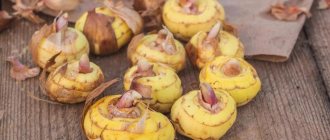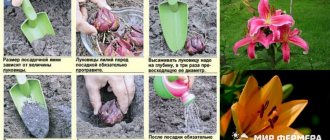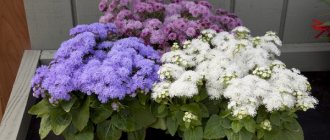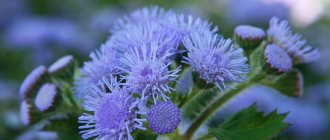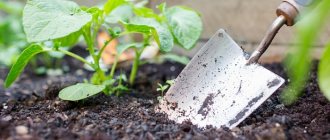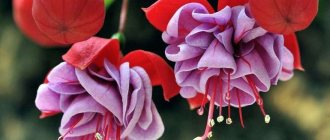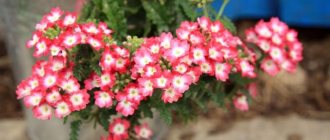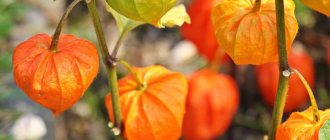The herbaceous annual and perennial plant Phacelia is a member of the Borage family. According to data taken from various sources, this genus includes 80–180 species and even more. In nature, phacelia is found in North and South America, and it prefers to grow in sunlit, open places with well-drained soil. The name of such a plant comes from the Greek word translated as “bundle”, this is due to the appearance of its inflorescences. The Phacelia tansy species is cultivated mainly as green manure. This culture helps improve the structure of the soil, enriching it with nutrients. Some phacelia species are cultivated by gardeners as ornamental plants. In addition, this plant is considered an excellent honey plant, which can attract bees and other pollinating insects to the garden plot.
What is phacelia, its green manure properties
Tansy-leaved phacelia fully exhibits the qualities of green manure.
Therefore, let us consider the properties of the plant in relation to this species. Translated from ancient Greek , the word “phacelia” means “bundle” . The height of the plant reaches one meter. The similarity of the leaves in shape to tansy leaves formed the basis of the name.
The peduncles are shaped like spikes and consist of small flowers, no more than three centimeters in diameter. On average, the number of such ears on one plant ranges from 30 to 40 pieces. It all depends on the growing conditions. During flowering, phacelia emits a pleasant aroma, which attracts bees.
A cascading type of flowering is characteristic. It consists of blooming buds one after another. The lifespan of one flower is about two days. Thus, during the entire growing season, the plant has flowers, buds, and the stage of seed formation is observed.
About 40 days should pass before flowering begins. If you do not mow the phacelia at this stage of development, then for another eight weeks you can admire the continuation of flowering.
Advantages and disadvantages of phacelia, benefits and harm to soil and plants. Is it true that it is considered a universal green manure?
Phacelia, as a green manure, is used even on the most problematic soils. It is planted on soils with a high content of clay or sand.
Here is how green manure affects soil intended for growing crops:
- the soil becomes loose, air penetrates the upper layers of the soil, saturating the root system with oxygen;
- soil fertility increases. This occurs due to an increase in the amount of useful elements in a form that is easily accessible to plants;
- the acid-base balance of the soil is normalized.
Types and varieties of phacelia with photos and names
As mentioned above, the Phacelia tansy species is very popular among gardeners and gardeners; its detailed description can be found at the beginning of the article. Other types and varieties of such grass are also cultivated, but as a rule, they are grown as ornamental plants.
Silver phacelia (Phacelia argentea)
In nature, this rare species is found in the northern part of California, and it prefers to grow on coastal sandy slopes and dunes. The height of the ascending and drooping shoots is about half a meter. The surface of the glossy leaf blades is covered with white pubescence, which is why they acquire a silvery color. White small flowers are collected in spherical heads.
Phacelia bolanderi
In nature, this phacelia is found in redwood forests in California. Spreading worm-like shoots form low mounds. The terminal inflorescences consist of large, arching, bell-shaped flowers of a lavender-blue hue.
Phacelia hastata
The species is found in the wild in the United States of America, and it prefers to grow in wormwood thickets and coniferous forests. The height of the bushes is about half a meter. The flowers are small, white or light purple. This species differs from the others in that on the surface of the leaf blades there are almost parallel veins and dense silvery hairs. This species has a fairly popular variety - Alpina: the bush has spreading shoots and short inflorescences of a lavender-purple hue; in nature it can be found at an altitude of up to 3.5 thousand meters above sea level.
Silky phacelia (Phacelia sericea)
Under natural conditions, this fairly popular plant is found in North America from Colorado to Alaska and from Utah to New Mexico. The bush has several or just 1 unbranched stem, reaching a height of about 0.45 m. On the surface of the plant there is pubescence consisting of silky delicate hairs of a silvery color. The leaf blades are deeply cut. The flowers have a lavender, blue or purple color and long stamens, making the plant look similar to monarda or lupine. Varieties:
- Ciliosa . Found naturally on grassy slopes in Oregon. This multi-ciliated phacelia reaches a height of about 20 centimeters. From greenish-gray foliage, on the surface of which there are thin hairs, this grass forms a mat. The color of the flowers is purple.
- Verna . This variety occurs naturally among basalt rocks in Oregon. The bushes reach a height of about 25 centimeters. The terminal inflorescences are racemose and consist of white or bluish flowers.
Bell-shaped phacelia (Phacelia campanularia), or Californian phacelia, or Californian bell
The species is native to southern California. The height of such an annual is about 25 centimeters. Erect and fragile shoots are painted pale red. Greenish-blue, weakly lobed petiolate leaf plates reach about 60 mm in length; they have a brown-red border along the edge. Racemose one-sided inflorescences consist of bell-shaped dark blue flowers, reaching about 30 mm in diameter, with dark spots at the base. The most popular variety is Blue Bonnet: deep blue flowers adorn the bush, reaching a height of about 0.4 m.
Phacelia congesta
At the tops of the shoots, twisted inflorescences grow, consisting of small blue flowers, which reach no more than half a centimeter in diameter. The stems reach a length of about 0.5 m, they are decorated with greenish leaf plates, the surface of which has dense pubescence.
For which crops is phacelia suitable?
Phacelia is known for its versatility. It can be used to improve land plots after any crop. After phacelia, you can grow vegetables, grains, and other types of plants. For example, cruciferous crops cannot be planted after mustard. For phacelia there are no restrictions in this regard.
Phacelia, like green manure, intensively and quickly produces succulent leaves and stems. Does not require mandatory incorporation into the soil. You can limit yourself to trimming the roots with a flat cutter and leave them on the soil surface.
Growing
Reproduction
Phacelia seeds are planted in open prepared soil. Low temperatures have little effect on its development. Temperatures of -9 degrees cannot kill even young plants. Sowing of phacelia is done in the last days of autumn.
The first shoots emerge from the newly melted snow. March or early April is suitable for spring sowing. As soon as the garden harvest ends, you can immediately sow phacelia. This time usually falls in July.
Phacelia has very high adaptability to external living conditions. Suitable conditions for rapid weight gain include adequate ventilation and lighting. The plant cannot be replanted; it will die.
Therefore, it is sown immediately in the desired area. Since phacelia seeds are small and light, they are mixed with sawdust or sand. The sowing rate of phacelia per 100 g of seed is 55-80 m².
There is no need to pre-cultivate the soil before sowing. But some gardeners, for their own reasons, make small holes, 2 cm deep. To increase the number of seedlings, the seeds are thoroughly trampled into the ground.
It is better to plant seeds in wet soil. If you have not had precipitation for a long time, it is recommended to do a thorough watering. The first shoots appear within 12 days from the moment of sowing. When the plant can count 3-4 leaves, thinning is carried out. The required distance between the bushes is approximately 7 cm. When the plant reaches a height of 8 cm, the distance is increased to 15 cm.
Care and treatment
Phacelia flower is a persistent and unpretentious plant. It is classified as drought-resistant. The need for watering arises when cracks have already begun to appear on the ground. During the first period of life (2-3 weeks), young seedlings do not tolerate weeds well.
During this period, regular weeding and loosening are required. There is no need to weed an adult plant. If you want to speed up growth and improve flowering, you need to apply a universal fertilizer with a rich mineral complex twice a month. Thanks to him, the flowers will grow big. The first blossoming bud appears after a few weeks, and wild flowering occurs after a month.
Reviews and advice from gardeners
I use phacelia to “clean” the garden of weeds and diseases.
Helps get rid of late blight that affected tomatoes and potatoes. It is less suitable as a fertilizer, but the soil becomes loose and the acidity goes away. I noticed that there was less wheatgrass. Vitaly. Moscow region.
I would like to warn novice gardeners against the mistakes they make by not following mowing deadlines.
If the phacelia is already blooming profusely, then the stems will decompose slowly. There's no point. You should start mowing at the first signs of flowering. The stems are not yet hard, you can chop them further. If you missed the moment, it is better to put the remains in the compost pit. Leave only the roots on the field. After two weeks they completely rot. Anna. Tula city.
I sow phacelia together with other green manures.
I especially like the mixture with legumes. Phacelia, as green manure, does not contain enough nitrogen. Joint planting with other green manures smooths out this disadvantage. After such soil preparation, any vegetables can be grown. It is better to plant phacelia densely. Rare crops immediately bend to the ground. Natalia. Rostov region.
I try to sow phacelia every year after harvest.
Sometimes I plant together with mustard, but more often I just alternate these crops. I do not recommend leaving it until flowering. This is a powerful honey plant. A huge number of insects will appear on the site. It is especially unpleasant when wasps are buzzing everywhere. Moreover, they start nests, it is difficult to get rid of such a neighborhood. Having had this experience, I no longer bring it to the flowering stage. Sergey. Moscow region
I tried different green manures. Once I sowed mustard. Everything was fine, but then aphids came. There are no such problems with phacelia. Green manure helps get rid of weeds under trees. We have a large garden, and it’s not always possible to weed everything. I leave the phacelia until it blooms. The inflorescences are very beautiful. The bouquet can last more than a week. An armful of phacelia looks great.
There is no need to be afraid that the plant will spread throughout the garden.
The germination rate of self-sowing seeds is very low. Still have to buy more. They are not cheap. Olga. Severodvinsk.
Phacelia care
Such a crop needs watering only until the emerging seedlings grow and become stronger. If the sowing was done before winter or at the beginning of spring, then there is no need to water the area, since the soil is already saturated with moisture. If it rains systematically during the season, then there is no need to water this green manure at all. However, during a prolonged dry period, the phacelia area needs to be watered occasionally. You also need to regularly loosen the soil surface around the plants to a shallow depth.
In order for the bushes to grow lush green mass, they should be fed with organic matter (for example, Optim-Humus, Baikal EM-1, Bokashi, Siyanie-1), which contains effective soil microorganisms. This fertilizing should be carried out strictly following the instructions included with the fertilizer.
Mowing of such grass is carried out during the formation of buds. If you mow it later than necessary, the shoots and foliage will become very rough, and this will significantly slow down their decomposition. And with slower decomposition, a large number of harmful microorganisms enter the soil from the rotting mass. After the grass is mowed, it must be sprayed with a preparation that speeds up processing, and then the top layer of soil is dug up. Such grass actively decomposes, and subsequent humification of the soil is observed only if there is moisture in the ground; therefore, during drought, the area will have to be watered regularly. When the grass is embedded in the soil, its surface is leveled, and then this area is re-sown with this green manure. This method allows you to get 3 or 4 crops of this grass during one season, and in the next season such an area can be sown with vegetable crops.
Diseases and pests
This culture is very resistant to any diseases and harmful insects, and it can also protect those plants that are grown nearby from them. In order to prevent damage to vegetable crops by various diseases and harmful insects, it is recommended to sow phacelia between rows.
Varieties
Phacelia Campanularia is divided into 2 subspecies, differing in flower morphology:
- var campanularia;
- var vasiformis.
The first variety has a narrow oblong corolla with widely spaced lobes. Its length usually exceeds its diameter. Var vasiformis has funnel-shaped flowers. The length of the corolla, as a rule, exceeds the width.
Subspecies also differ in their distribution area. Var campanularia is found in the west and var vasiformis in the east.
Based on its natural appearance, a decorative variety of phacelia bell-shaped, Blu Bonnet, was bred. It is taller than the wild plant, reaching 40 cm in height. The flowers of this variety are bright blue.
Features of breeding phacelia
Due to the fairly wide sowing row, plants need regular row-spacing treatment and weed removal. Many gardeners prefer to treat seeds with special herbicides before sowing. But, in fact, this does more harm to the future plant than it benefits. After flowering is over, the plants must be mowed and chopped, and then buried not very deep in the ground.
Phacelia is planted in early spring, when the snow has just melted, and until autumn. But the most fertile time for sowing is June or July. The seeds need to be buried approximately 3 cm.
To plant honey plants, choose an area that will be protected from dry and very strong winds and well lit by the sun. Under such conditions, the amount of pollen and nectar increases significantly and the flowering of plants is prolonged.
Description
The phacelia plant is a tall, well-branched annual shrub covered with downy bristles. The leaves are sessile, pinnately dissected, and reach 20 cm in length.
The blooming phacelia looks very attractive: numerous lilac-lilac flowers are collected in inflorescences - umbrellas, long stamens are clearly visible above the petals.
During the flowering period, fragrant fragrant flowers attract pollinating insects. Therefore, phacelia is often planted near fruit bushes and trees.
After flowering, a fruit is formed on the stem - a capsule in which the seeds ripen.
Phacelia grass is used as a honey plant and universal green manure. It grows greenery very quickly, and any crops can be planted in its place without restrictions.
Phacelia
- not afraid of cold (which promotes early sowing),
- protects the soil from erosion and
- occupies space, leaving no room for weeds.
An advantageous plant in all respects.
Methods of use
It is not for nothing that phacelia is considered a universal plant - it is used for various purposes. Most often - as an effective fertilizer . It is noteworthy that useful substances are accumulated not only by greens, but also by the root system of the plant. Usually green manure is simply embedded in the ground after mowing. Before digging, it is recommended to wait a few days so that the green mass dries slightly. To speed up decay, the grass can be slightly chopped.
Another option for using phacelia is preparing top dressing . Green infusion is an effective fertilizer for all vegetable crops. It's easy to prepare:
- Chop the greens into large pieces and fill a large container (bucket, tank, barrel). Spread the biomass loosely, do not compact it.
- Fill the chopped herbs with water to the top.
- You can replace the water with a decoction of wood ash (steam 1 kg of ash with a bucket of boiling water).
- Cover the container with a lid and place in direct sunlight.
- Stir the mass regularly for two weeks, activating fermentation.
When fermentation is complete, strain the mixture. It is not recommended to use the infusion in its pure form - this will lead to burns of the roots or leaves of the plants. It is necessary to dilute the fertilizing with water in equal parts. Fertilize vegetable or garden crops after watering. Fertilizer must be applied at the root. To quickly penetrate the root system, loosen the soil first.
Green manure can also be used as a nutritious mulch. The thickness of the mulch layer is at least 20 cm. The greenery, abundant in useful substances, will serve as an effective fertilizer for plants, protect the soil from drying out, and keep the soil light and loose.
Application in decorative floriculture
Phacelia bell-shaped is a blue flower with a wide cultivation area. This plant can be used in landscape design, grown in flower beds, borders, rocky hills, gardens or flower beds. The bright corollas of Phacelia Campanularia will contrast perfectly with the green herbaceous background.
Due to its compact size, this plant is also suitable for growing in small containers - pots, containers or hanging baskets. Californian phacelia seeds are part of the Moorish lawn.
Plant propagation
The named plant reproduces through seeds. Planting is done in the spring. All seeds should be carefully covered with soil, as they germinate best in the dark. The first seedlings hatch approximately 7-10 days after sowing. After noticeable growth of the seedlings, they must be thinned out, leaving a distance of 10-15 cm between them.




